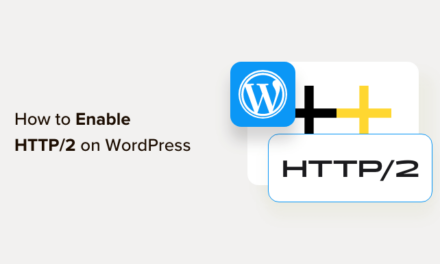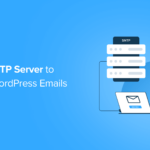Data privacy is an issue that has come to the forefront of consumers’ minds in recent years.
After data breaches from Cambridge Analytica, Equifax, LinkedIn, Target, and a handful of other global companies, consumers are becoming more conscious about how much of their data is collected, stored, and used.
Businesses don’t have any excuse not to take this time to improve their data security efforts.
Newly-passed laws like the General Data Protection Regulation (GDPR) and the California Consumer Privacy Act (CCPA) add new requirements for businesses that are storing customer data.
In addition, consumers are expecting companies to step up and be transparent with how they are using their data.
More than 60% of Americans have said that they are concerned about data privacy when browsing online. Companies with data breaches will not only face legal ramifications, but they will also lose consumer trust.
While there are many things you can do to keep customer data secure, here are five actions you can take immediately to begin improving your company’s security.
1. Add Password Strength Checks
Before we get to your site’s safety, start by examining how your customers can enhance the security of their accounts and data.
Begin by examining how your account profile setup process works.
On most sites, it’s customary for shoppers to create a profile or checkout as a guest. Either way, their information is stored by your site to process the order.
Businesses should add password checks to improve the passwords customers create. This step can improve individual shopper security, even if a company-wide data breach doesn’t occur.
Research shows that “human factor problems” such as simple, reused passwords or poor password storing habits by users can contribute to compromised accounts.
Businesses can help users bolster the security of their accounts by adding additional security checkpoint features. One of these mechanisms is a password strength check.
Password strength checks ensure that users are creating complex passwords that are tough for hackers to crack.
Look at how Capsule Fillers guides their shoppers in creating strong passwords.

As a new shopper creates their password, the password strength bar under it will light up red if it’s weak or green if it’s complex enough.
In addition, there will be instructions on what the customer needs to add—special characters, lower case, upper case, digits, etc.—to ensure their password meets the standard for enhanced safety.
Simply adding this function can help consumers take a more proactive stance in bolstering their security and ensuring their accounts are safe.
2. Leverage Cloud Data Storage
Businesses need to leverage cloud data storage to enhance the safety of their customers’ information.
If they aren’t currently utilizing cloud storage, they can begin to transport their customer data securely to the cloud by performing a cloud migration.
Migrating to the cloud for data storage has numerous benefits. According to AppDynamics, “Most cloud providers also offer built-in features including security analytics, periodic updates, and cross-enterprise visibility.”
Security analytics, periodic updates, and cross-enterprise visibility all provide business owners with the ability to understand where vulnerabilities lie in their security protocol.
If you’re just storing data in a data warehouse or data management platform, you might not have access to some of these enhanced security tools.
3. Standardize Online and Offline Data Storage
One of the worst things your business can do is secure data in varying, non-secure environments.
You don’t want to have some customer data stored in the cloud and some stored in a data warehouse. This can cause a handful of problems, and it will become challenging to fortify your security efforts in multiple places at once.
Thus, it’s important to sync your data between online and offline storage locations. If a customer data point is stored in multiple places, it needs to be updated or deleted simultaneously if changes are made.
This is important because it decreases the amount of “hands-on” work that an employee needs to do to update, filter, and clean the data.
The less time an employee is handling the data—whether he or she is updating, sorting, or segmenting it—decreases the chance for human error. This can be as simple as providing access to the wrong person or corrupting the data.
The best way to take control of this is by improving your data collection process and integrating forms with your CRM.
There are many responsive, mobile-first forms that you can add to your site that will parse and sort your data into the fields it needs to be in.
This can eliminate the need for employees to do this manually which can result in security and privacy issues for the company.
4. Identify Potential Threats to Your Website
Privacy and security need to be a non-stop, concentrated effort in order for your business to succeed.
But how can founders take a holistic view of their security pitfalls and still focus on building their business?
They need to focus on identifying potential threats.
Once a “security moat” is built and your business is safeguarded, you need to continue to look for different vulnerabilities in your data protection efforts.
This includes identifying any potential for data misuse, human error, or data breaches by foreign agents.
In order to do so, there is plenty of software available that can help. Since data security affects the entire business, don’t limit yourself to just security software.
Take SEO software for example. You might already have SEO plugins or software installed on your site. These can help monitor spammy links and site speed issues that can affect your site’s stability and security.
Founders need to be hyper-aware of the onset of potential security issues.
If they don’t have time to review the reports or be knee-deep in the software, they can hire a freelancer to continuously monitor and surface any irregularities that they find.
Software can help indicate what security issues business owners might need to focus on before an attack or breach arises.
5. Make Your Security Policies Transparent
Lastly, you need to make your data privacy and security policies transparent.
This is more than just stuffing a Terms of Service page somewhere on your site.
You need to make sure that customers understand how serious you take their privacy and what actions you’re taking to ensure your site is secure.
Look at how GILI Sports prominently features both a privacy page and a terms page under the “Company” header of their navigation bar.

Customers deserve to know how their data is being used (and they also need to consent to that usage, too).
In addition, be sure to secure your website with SSL encryption, and broadcast that to users to ensure they are aware.
For example, on Spruce’s site, they clearly display this to keep customer and business data secure:

By outlining your privacy policy and security efforts, you can stop and think about all the precautions you’re taking to keeping your business secure.
This is a good self-check for founders. Are you doing enough? Do you feel confident in your business’ security protocols? You might find that your security efforts seem light when they’re spelled out in front of you.
With that new insight and outlook on your security, you might want to go back and re-evaluate your protocol.
This can help prevent irreparable harm for your business and will ultimately lead to additional protections for your customers’ valuable data.
Conclusion
Consumers are becoming more interested in how their data is being used and stored by the businesses they frequent.
As a company founder, you can’t do too much when it comes to keeping your business data secure.
To start, add simple mechanisms like password strength checks to ensure your customers are creating complex passwords.
Leverage the cloud for data storage to take advantage of its built-in security features.
Standardize your online and offline data storage by syncing data through responsive forms.
Continue to identify potential threats to your website.
Educate your customers and make your security and data privacy practices transparent.
By completing all these steps, you will be heading in the right direction and making your business more secure this year.











